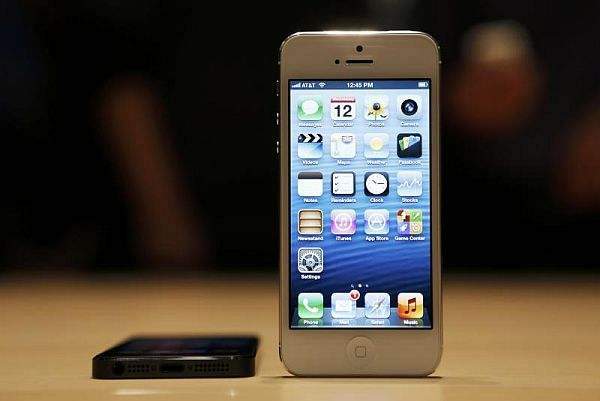Should you upgrade?
So then is it worth upgrading to the iPhone 5? Well if you’ve just bought an iPhone 4S, probably not because apart from the few hardware differences (faster processor, larger screen), many features of the iPhone 5 will be available with the iOS 6 upgrade coming out on Sept 19.

As always, the Apple faithful and dedicated journalists stayed up till the wee hours to get the latest update on the new iPhone.
There was a lot of information to absorb – apart from the iPhone 5, Apple also updated the iPod nano and the iPod touch lines.
Anyway, in case you don’t have the time to watch the presentation (which is now available at apple.com) we take a look at some of the features of the iPhone 5 and give our thoughts on whether it’s worth upgrading or not.
Features
Externally, the iPhone 5 marks a major change in body shape, screen and design – instead of the all glass front and back of the iPhone 4 and 4S, the new iPhone now has a taller screen and an aluminium back.
Interestingly, the physical appearance of the new iPhone and some details of its screen had already been leaked online, and the final product came out practically identical to the photos that various websites have shown.

Apparently, the fit and finish of the iPhone 5 is better than ever, with variances of only a few microns between parts.
In fact, tolerances for the fit of the products are so tight that the manufacturing process involves taking a photo of each part and then custom fitting the parts based on these measurements to another compatible part.
What we get is a thinner, lighter iPhone 5, with a taller 4in screen, an A6 processor that’s said to be 2x faster in CPU and graphics performance compared to the iPhone 4S’s, an improved camera (although it’s still 8-megapixels) and, most controversially, a new, smaller dock connector.
So what does a taller screen get you? Well, an extra row of icons for one. More importantly, the 1,136 x 640-pixel screen (still a Retina display) is now much closer to the 16:9 aspect ratio of most movies and TV shows.
One welcome feature of this new screen that most people will not immediately notice till they’ve used it awhile is that Apple claims that it has 44% better colour saturation and less reflections.
Now, while Apple devices have always been no slouch when it comes to colour accuracy, the Retina display on the new iPad pushed colour accuracy up yet another notch, and it’s nice to see that the iPhone 5 has followed suit.
As far as the camera is concerned, even though it sports the same 8-megapixel, 5-element backside illuminated sensor, Apple has made a few very welcome tweaks to it.
For one thing, the front lens element is now made of sapphire crystal, the same scratch proof material you find in luxury watches.
For another there’s a new dynamic low light mode that allows for better pictures in dim light and is supposed to be greatly improved over the iPhone 4S – apparently up to 2EV better.
The image processing and noise reduction has also been improved which should be great since many of our pictures are taken indoors in poor lighting conditions.
On the software front, Apple has added a multi-shot panorama mode, allowing you to shoot a series of photos which are then automatically stitched to make a final image that can be as large as 28-megapixels! A nice touch.
And yes, finally, the front-facing camera has now been upgraded to a 720p iSight camera, which means that video calling will be even clearer than ever before.
What’s more likely to cause a hassle for people looking to upgrade is perhaps the new dock connector which Apple calls the Lightning port.
 REVAMPED: The new connectors for the iPhone 5. Upgrading to the iPhone 5
means that all the iPhone/iPad cables that you have lying around the house will now no longer fit the new iPhone. – Reuters
REVAMPED: The new connectors for the iPhone 5. Upgrading to the iPhone 5
means that all the iPhone/iPad cables that you have lying around the house will now no longer fit the new iPhone. – Reuters
It’s a new, much smaller 8-pin connector, which means that the larger dock connector that Apple has been using since the iPod nine years ago has now been retired.
Yes, changing to the new iPhone 5 means that all the iPhone/iPad cables that you have lying around the house will now no longer fit the new iPhone.
On the upside, Apple will sell a relatively cheap adaptor that will fit on the older cables to convert it to the Lightning connector.
However, the major advantage for users with this new connector is that it has no “front” or “back” – you can insert it into the iPhone 5 either way, thus eliminating that extra hassle of having to do a quick check that you are plugging in the dock connector the right way round.
Should you upgrade?
So then is it worth upgrading to the iPhone 5? Well if you’ve just bought an iPhone 4S, probably not because apart from the few hardware differences (faster processor, larger screen), many features of the iPhone 5 will be available with the iOS 6 upgrade coming out on Sept 19.
We haven’t even touched on iOS 6 in this article, which brings many improvements including a new all-Apple mapping service with turn-by-turn directions.

However, if you have an iPhone 4 or older, then the iPhone 5 will be quite a leap – performance will be way better, the screen is larger and the camera is greatly improved over the iPhone 4.
How does it compare to the competition? Well as far as its closest competitors in the Android market goes, the iPhone 5 still hasn’t got the largest screen, but in terms of the other features, it compares favourably in almost all respects.
The one advantage of the Apple ecosystem is, of course, the App Store and the iTunes store, which recently opened its doors to Malaysians, allowing us to buy music as well as movies, something which Android has yet to match.
So, if you’re an iOS user (especially an iPhone 4 or older) the iPhone 5 is a worthy upgrade, but if you’re an Android user with one of the top-of-the-line smartphones, you’ll not find anything in the hardware that is a lot better.









